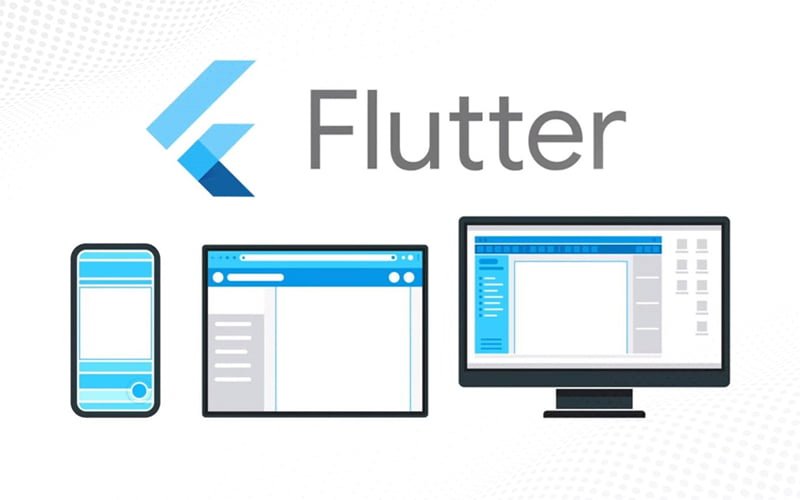Libraries like React js, angular js, next.js, flutter, and more such technologies have gained prominence in this ever-changing world because they make web design services much easier.
JavaScript libraries and frameworks have grown to dominate the web, making it easier than ever for developers to design dynamic user interfaces. As a result, there is a huge demand for front-end developers that are proficient in these technologies.
What Is Front-End Development and How Does It Work?
The part of web development that is visible to the end-user is called front-end development. As a result, front-end developers are primarily in charge of creating user interfaces (UIs) with which users can interact.
Front-end development is the process of converting back-end code into something that the user can navigate via a graphical interface.
Front-end development guarantees that you can use an application or website properly, whereas back-end development works behind the scenes with servers, databases, and other internal structures.
You could be staring at an unattractive muddle of code right now if you didn’t use front-end web development. In general, front-end development attempts to meet three key goals: accessibility, speed, and performance.
To build front-end behavior, web development, in particular, necessitates a specialized set of essential tools. HTML, CSS, and JavaScript are the building blocks of front-end web development.
Technology has advanced dramatically to make websites and applications more engaging and to provide consumers with a seamless user experience. React JS, Angular JS, and flutter, for example, have improved website speed beyond expectations.
A properly developed website assists you in the eCommerce SEO packages that you have availed from your service provider.

Which framework is best for web development in 2022?
1. React
React is a well-known front-end JavaScript library for designing user interfaces and related components, often known as ReactJS. With a modified table of display and data availability, it uses the MVC architecture.
React, a Facebook-powered front-end library has been hailed as a great addition to the front-end toolkit. It divides larger components into smaller components that can be managed separately and independently. The total productivity of developers will undoubtedly increase as a result of this functionality. While ReactJS is popular for developing Progressive Web Applications (PWAs), React Native is a great tools for building Native Mobile Apps.

Employed by:
Netflix, PayPal, Uber, Groupon, Microsoft, etc.
2. Angular
Angular is a top frontend framework that is now ruling the web frontend frameworks list. It’s a framework for building complex and efficient single-page apps. It’s a Google-developed Typescript-based development platform. Angular is a component-based framework for building scalable online applications that include a set of tools for developers to write, build, test, and modify code, as well as a library of well-integrated libraries.
Angular allows you to expand single-page apps to enterprise-level apps depending on your requirements. YouTube and Google Translate are currently using it. It also comes with a plethora of functionality, making it one of the most widely used frameworks.
Employed by:
Forbes, Xbox, Blender, Gmail, Upwork, PayPal, Microsoft Office.
3. Vue.js
Vue.js is a modern, progressive MVVM framework that makes the most of gradual adoption. Vue.js, as one of the best JavaScript frameworks, has been used to create a lightweight and adaptable interactive UI elements. It offers data-reactive elements using a simple and extensible API. It’s simple to finish little projects before moving on to bigger ones.
It is possible to generate small and big level templates, and faults can be identified quickly, saving time and effort. It makes current apps easier to bind and comes with a lot of documentation.
Used by:
Netflix, Facebook, Grammarly, Trivago, etc.
4. Svelte
Svelte is a high-performance JavaScript compiler. It was founded by Rich Harris in 2017 and is still in its infancy. It differs from other DOMs in that it does not use a virtual one. Instead, it uses a specially developed JavaScript Virtual Machine for producing user interfaces. Svelte is up to 10 times faster than other platforms like the Angular and React frameworks as a result of this.
If you require a small, rapid application produced by a small team of frontend developers, including beginners, Svelte is a fantastic choice.
5. jQuery
jQuery is one of the oldest frameworks on the market, and it is still widely used by programmers. jQuery is a tiny, fast, feature-rich, and one of the best frontend javascript frameworks library designed by John Resig. It’s a cross-platform library that makes client-side HTML scripting more convenient.
jQuery makes tasks like event handling, Ajax, animation, page navigation, and manipulation considerably easier by providing an API that works across a wide range of web browsers. jQuery has altered the way designers write JavaScript because of its extensibility and versatility. This is why over 41 million websites utilize jQuery.
Employed by:
Udemy, Twitter, Bank of America, Uber, etc.
Front-end development has always been a fascinating and enjoyable aspect of web development. Front-end developers must constantly be on their toes due to rapidly changing technologies and the availability of new browsers.
They are dominating the web and have improved the user experience exponentially.
